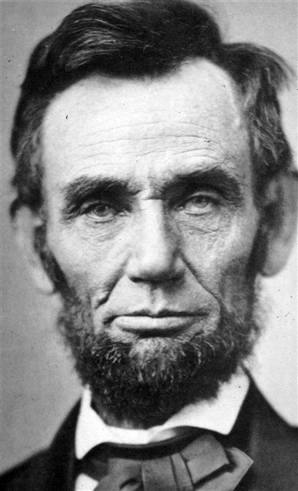Photo Corners headlinesarchivemikepasini.com
![]()
A S C R A P B O O K O F S O L U T I O N S F O R T H E P H O T O G R A P H E R
![]()
Enhancing the enjoyment of taking pictures with news that matters, features that entertain and images that delight. Published frequently.
Two Portraits On Presidents' Day




17 February 2014
It's a national holiday and we faithfully observe national holidays. But we can't help making two observations about portraits at the expense of George Washington and Abraham Lincoln, the presidents we honor today.
George was never photographed. Lincoln was. Or to put it another way, George was painted, Lincoln photographed.
BY GEORGE
Rembrandt Peale painted a few famous portraits of Washington but he did it in the 1850s, when his client couldn't complain about the likeness.
The Peales were a famous family of portrait painters. Charles Willson Peale painted the Revolutionary War patriots and left it to his sons Raphaelle, Rembrandt and Rubens to carry on the family business. A son named Titian even dabbled in photography. Charles had a large family, two actually, with a sprinkling of daughters, as well.
A Peale portrait invariably made use of catchlights in the eyes. Just a dot of titanium white at the 10 or 2 o'clock position and the whole face came alive. It was practically a Peale trademark.

George Washington. Notice the two o'clock catchlights in Rembrandt Peale's portrait.
A catchlight is a reflection of the main light source on the glassy, wet surface of the eyeball. In a modern studio portrait, their may be more than one (the main on one side, the fill -- which is often removed -- on the other).
And as for small white dots, well, as reflections they are on the shape of the light source. So if you use soft boxes, they are squares mapped to the contour of the eyeball. If you use an umbrella, you'll get something resembling Peale's catchlight. And if it's a beauty dish or a ring light, you'll get a ring. And so on.
Of course, you can always add catchlights later, as Peale did.
HONEST ABE
Lincoln, being no beauty, was an ideal subject for our review of Anthropics Portrait Pro in 2007 (so long ago we won't link to it). As we explained then:
Portrait Pro isn't really about beauty at all, but simple, time-tested flattery. It does simple retouching as well as more dramatic reshaping toward an ideal you may or may not find so ideal. That can't help but interest any professional interested in making a sale. Considering how easy the program is to use, there's nothing to fear, either.
We ran a photo of Lincoln through the program, which required us to mark certain landmarks like the eyes and nose and mouth before it worked its magic. We weren't expecting a Hollywood makeover, just a little flattery.

In fact, the best flattery is subtle. Otherwise it isn't believable.
Last week Buzzfeed published Watch Four Women React To Being Photoshopped Into Cover Models, a short piece on four women who got Photoshopped as an experiment. Those changes weren't subtle (let the page load a minute so you can see the transformations).
But the goal there was to idealize the women, not represent them. No, not subtle. Radical. And the women were not impressed. Sort of like they would not be impressed by a guy walking up to them in a bar and asking, "Come here often?"
TWO TOOLS PLUS
Catchlights and subtle retouching are two tools worth putting in your portrait bag. We'd like to thank our two presidents for demonstrating why.
But we'll leave you with a third tip that seems to make the most difference to the client. Reverse the image when you first show them their portrait. We see ourselves mainly in the mirror, after all. So a mirror image will show a more familiar face to your subject than the correctly oriented image the rest of us are used to seeing.
Which will make it easier for them to appreciate the sparkle you put in their eyes and the subtle flattery or your retouching.